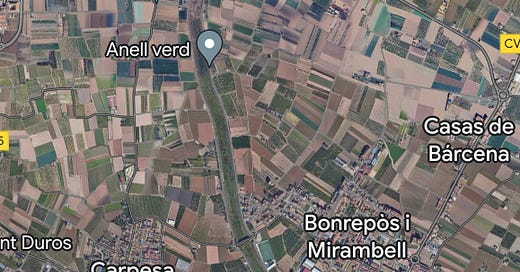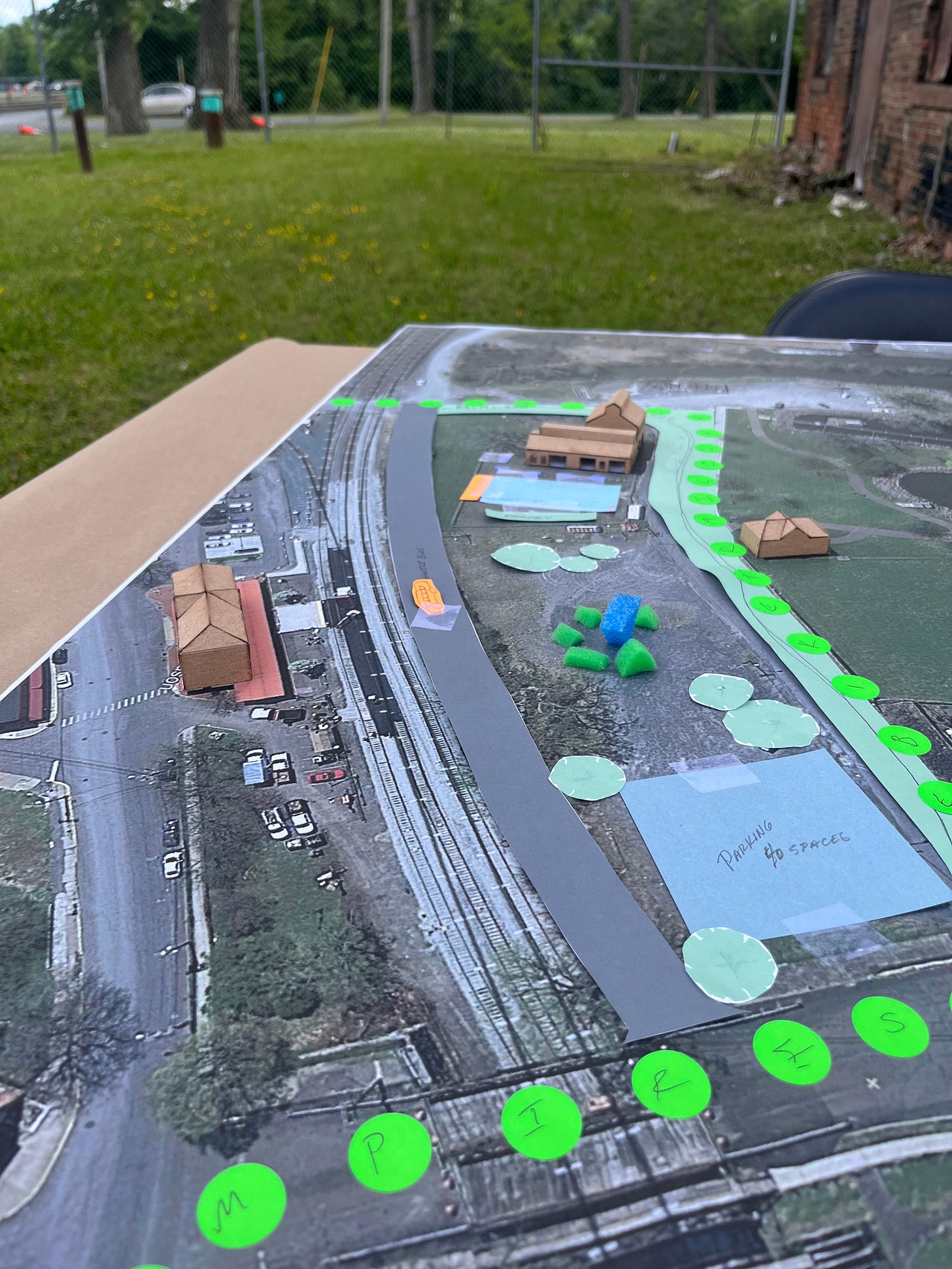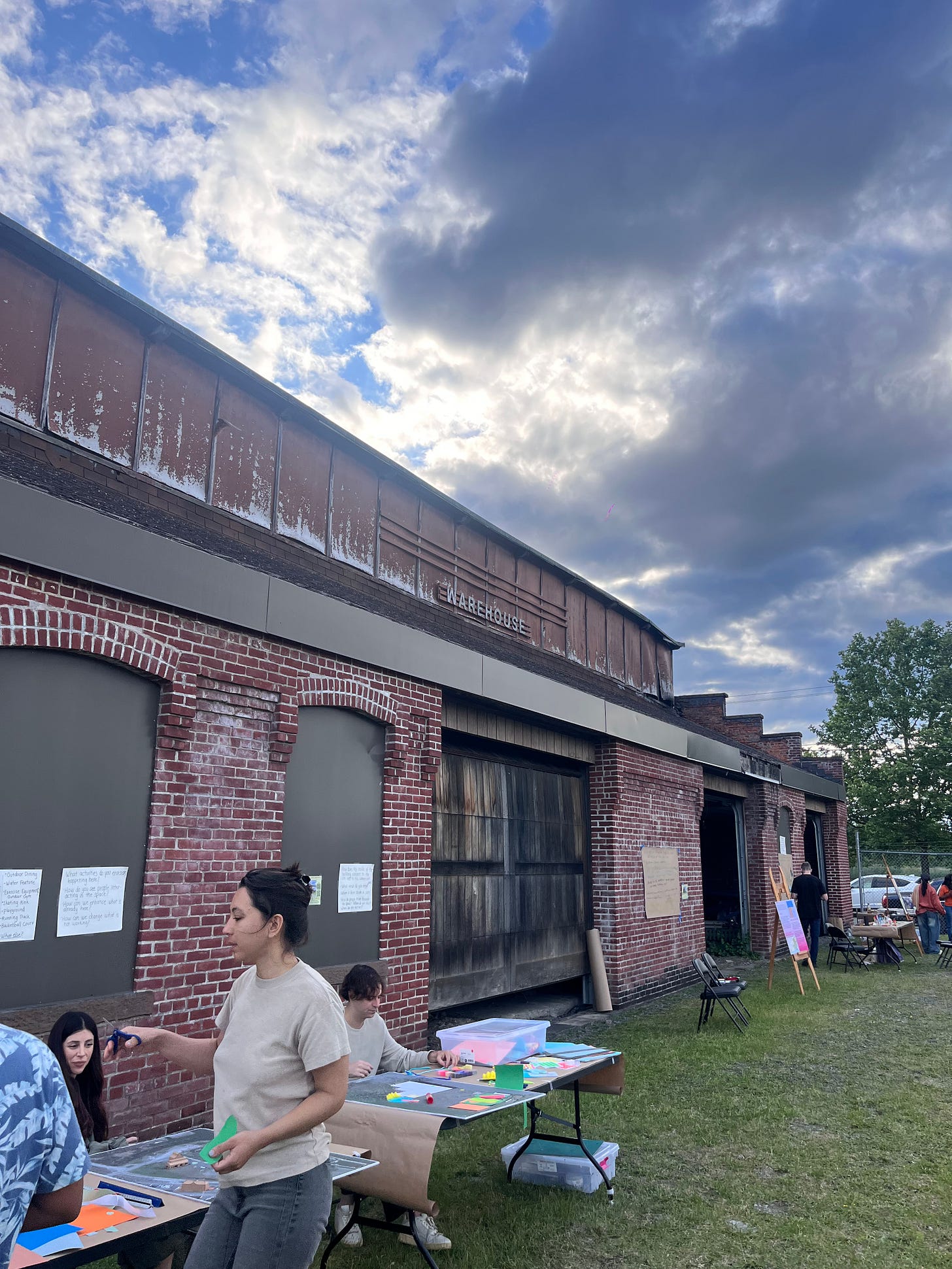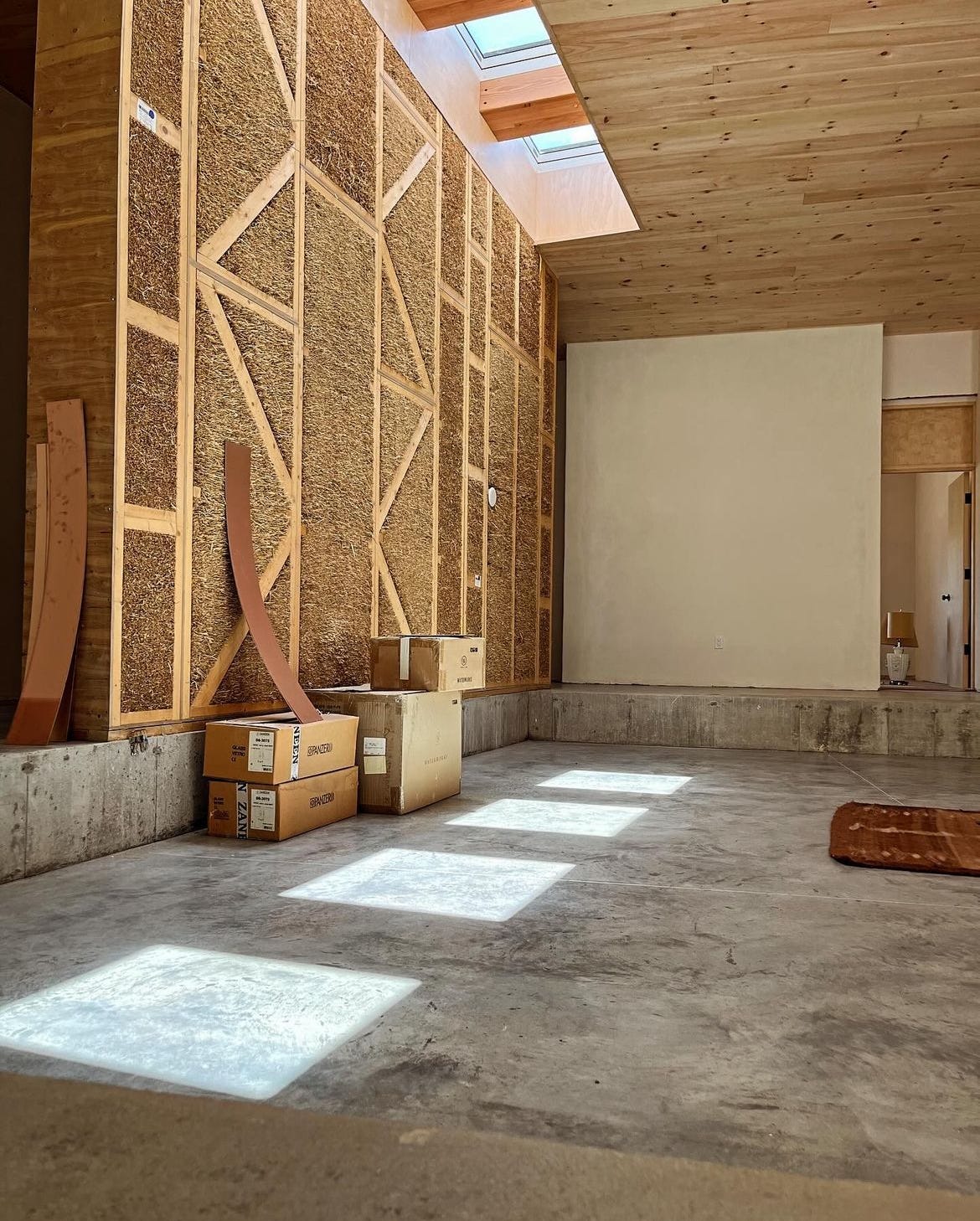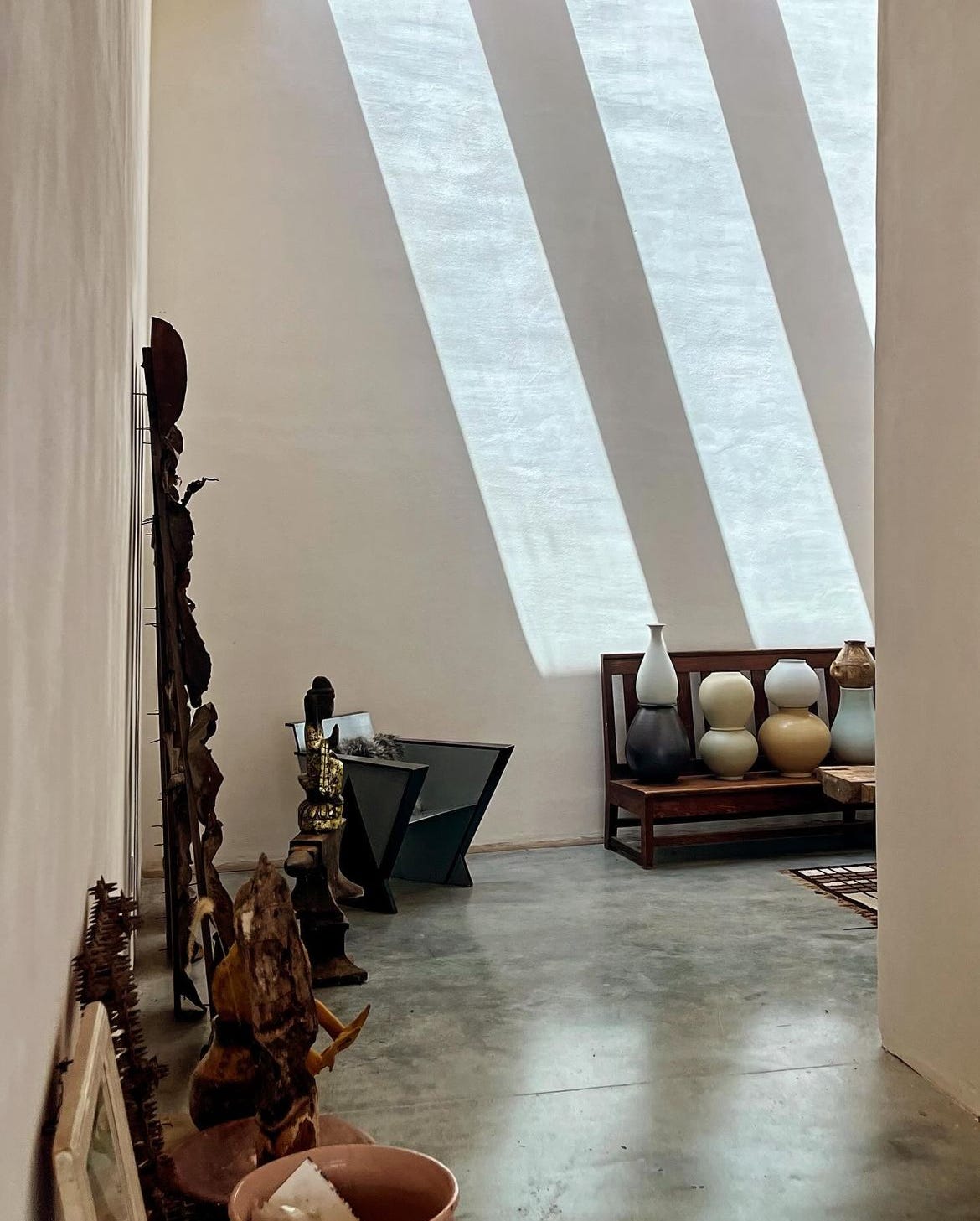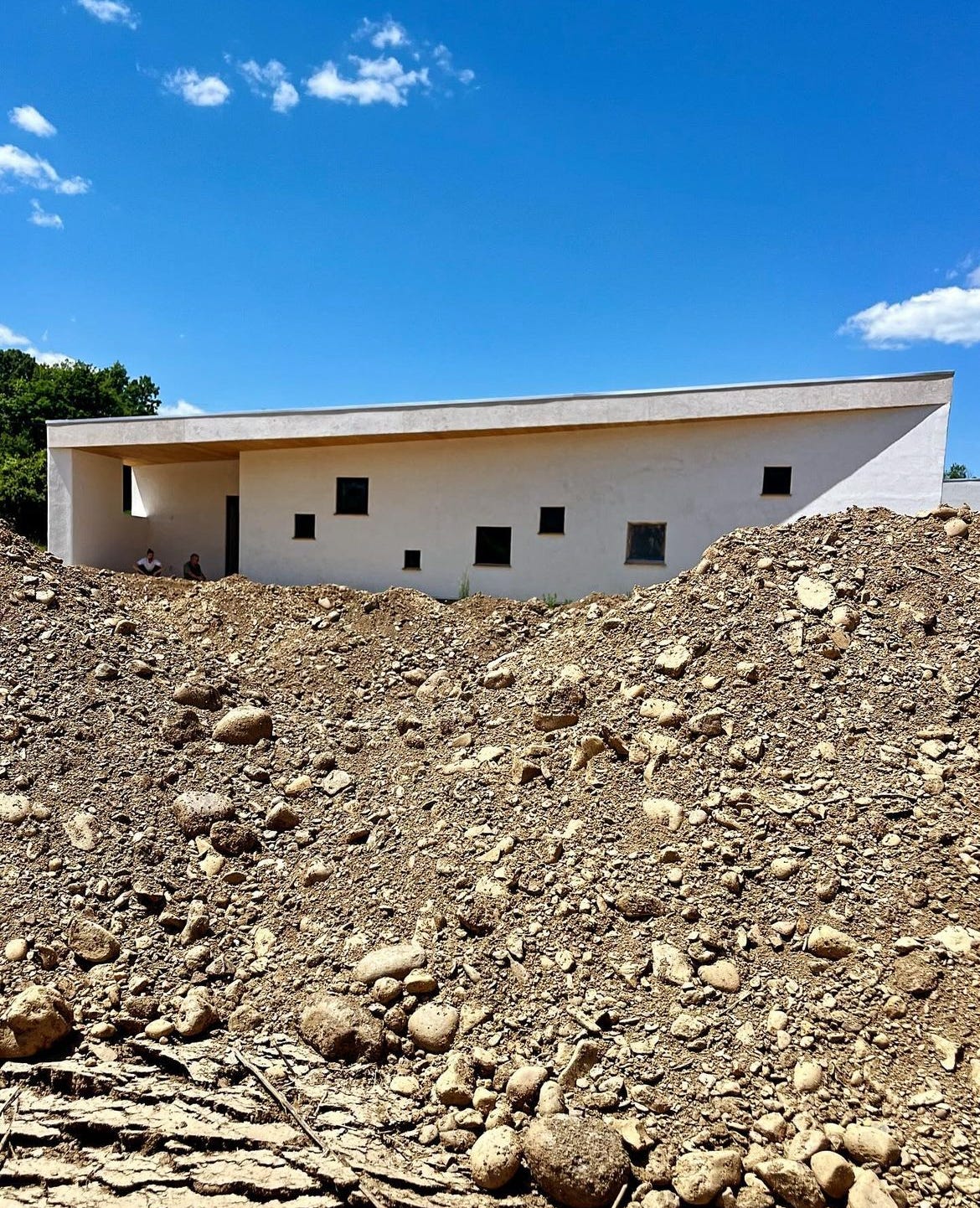Hello Hello All!
Summer's off to a sweltering start with this heat. I hope you've been able to embrace the sweat and humidity, perhaps finding refuge at a local swimming hole or a neighbor's pool this past week.
Before going onto reflections, wanted to emphasize the invite last on this newsletter. I hope to see some of you there, and pleasure seeing some of you in the past few days as well!
I'm still readjusting after a 10-day European trip to visit my sister, who has temporarily moved to Spain with her family. I feel fortunate to have carved out time for this travel, which marked the first extended period I've been away from my laptop since starting this real estate work. While I was happy to leave it at home, I've been surprised by how quickly I lost my groove with workflow, creating 'cobwebs' that haven't been the easiest to clear away. I'm trying to be gentle with myself as I get back into the swing of things.
I've shared extensively about my trip on Instagram, so I won't go into too much detail here. However, I do want to relay a particular living scenario I witnessed while staying in Valencia, Spain.
I was thrilled to see agricultural fields so close to the city center - not just a few, but extensive areas with homes clustered between the fields. At one point during my stay, I visited a restaurant on the outskirts of the city. The contrast was striking: a shopping mall (complete with H&M and other familiar brands) stood across from kilometers of vegetables, tractors, and farmers. Within this outskirt, I noted that all of the homes tended to be clustered right upon one another, leaving the majority of the surrounding land open to either agriculture or the wild. I'm sharing an image below to highlight what I'm describing.
OK, where am I going with this right now? Well, over the past few months, this notion of clustered development keeps coming up in the field and across my desk. And I was pleasantly surprised to witness these clustered living scenarios having viability and success in a modern European city. This model of clustered development, where homes are densely grouped together while preserving large swaths of open space for agriculture or nature, is a compelling example of sustainable urban planning.
Interestingly, this pattern isn't entirely foreign to us here in the Hudson Valley. It's part of why small cities like Tivoli, Hudson, and Rhinebeck are so popular. These towns embody a similar concept of clustered living, surrounded by open spaces and farmland. It's a stark contrast to the 'one home on 30 acres' model we sometimes see.
It's important to note that this clustered development isn't a modern technique at all. In fact, our rural sprawl is the more modern adaptation, one which in some ways is growing obsolete. The clustered approach harkens back to traditional town planning, where communities were built compactly to preserve agricultural land and natural resources.
While not a silver bullet, this approach offers potential solutions to balancing growth with preservation of our natural and agricultural resources. It's a pattern worth recognizing and potentially reviving as we consider development in our region.
As I re-engage with our ongoing projects, I'm excited to bring this fresh perspective to our work. I look forward to discussing how we might incorporate some of these ideas while respecting the unique character of the Hudson Valley.
If you're interested in exploring this further, please reach out. Let's catch up soon on how we can apply these insights to our current initiatives.
Community Engagement Dunn’s Warehouse
Sorry I haven't been on top of my invites here via Substack, but I did get an opportunity to attend a community workshop down on the Hudson waterfront. I initially saw the event re-shared by the Mayor on his Instagram, which was a fun and proactive way to get invited to a real estate development project.
Upon arrival at this warehouse, there was food, drink, good weather, and some happy faces all looking to engage on the future of this site. The process was divided into three sections: past, present, and future, with each station offering different ways to learn, engage, and give input on what might be possible for the place moving forward. This site has been an eyesore since I've lived in Hudson starting in 2012, and I was grateful to see a concentrated focus on it explicitly and out in the public. And no, I don't necessarily consider what happens in the government/town/planning offices very public. So it was quite refreshing to get a glimpse into a process outside of those rooms, onsite and amongst the faces of those who plan to actually be doing the redevelopment of the space.
In my last email, I shared a reflection on how and why this process of feedback typically fails or doesn't work. It's because there can be a huge list of generated ideas which can be difficult to synthesize or make sense of, as opposed to a more structured approach.
I'm going to re-share some quotes from the regenerative development book by the Regenesis Institute, which highlights the importance of a qualitative approach, one that strives to enroll others in the process, and elicit and care for the care that actually goes into a development project. I applaud the folks down at the Hudson Riverfront, because it was quite an inviting atmosphere; they went above and beyond their role.
"When developers do attempt to engage communities proactively, they usually end up with a tangle of opinions and issues that stifle their ability to be creative. Activities like group visioning and brainstorming often yield long laundry lists of likes and dislikes, wants and dreams, opinions and beliefs. These incoherent collections of contradictory viewpoints are rarely useful. Developers struggle to find the relevance of this input to their projects, and more often than not, it ends up on a shelf somewhere, leaving residents feeling dissatisfied or even betrayed by the process."
"The problem is that stakeholders are not invited into an authentic co-creative process. Thinking creatively as an individual is not the same as engaging with others to think together. Co-creative work requires a structured process that is oriented in a common direction. Unlike brainstorming, which scatters thinking, it brings focus and discipline to the group process. When community members engage co-creatively, they develop a real stake in the outcome of a project. In other words, they become co-responsible for the project's success."
Did I feel co-responsible for this project? Not really, but the engagement was genuinely sweet. The group listened to my hopes for the site, and it was a great way to meet others doing holistic work in the field.
I applaud the Hudson Riverfront team for creating such an inviting atmosphere. While I may not feel directly responsible for the outcome, participating in this workshop was valuable. It allowed for idea-sharing and community connection, potentially leading to better outcomes and stronger local support for the development
Please give the crew puttin this project together a follow on instagram, im sure the’yll be sharing more around the process.
https://www.instagram.com/dunn.warehouse/
Protect our forests from us or itself?
I recently had the opportunity to join a forest walk hosted by Parents for Climate Action. As someone eager to deepen my understanding of forest health, particularly given our region's prevalence of second-growth forests and invasive species, this was a compelling event. The tour showcased a 13-acre fenced portion of forest, revealing dramatic differences between the protected and unprotected areas. The fenced section boasted a more vibrant understory and a softer forest floor, reportedly due to fewer earthworms - a fascinating insight into the intricacies of forest ecosystems.
On one hand, we see the use of deer exclosures as a form of active management to promote forest recovery. The tour demonstrated how targeted intervention can foster resilience in our woodlands. By mitigating the impact of overabundant deer populations, these areas allow for natural regeneration and increased biodiversity, offering a glimpse into what our forests could look like if key pressures were alleviated.
Conversely, the Stop Zena Development Coalition's efforts in Woodstock emphasize the importance of preserving large, contiguous natural areas. Their family-friendly 'Walk & Rock' event underscores that intact ecosystems provide vital services - from wildlife habitat to carbon sequestration - that fragmented landscapes cannot.
These approaches might seem at odds - one involves human intervention, while the other seeks to limit human influence. However, they both stem from a shared recognition: our forests are under pressure, and maintaining their health requires thoughtful consideration.
The truth is, there's no one-size-fits-all solution to forest health. The 13-acre protected forest tour, while informative, presented a somewhat simplistic 'build a wall' mentality as a cure-all for forest health, followed by discussions on deer hunting as a management tool. This approach, while potentially effective in certain contexts, may oversimplify the complexities of ecosystem management.
On the other hand, the Woodstock event emphasized preservation, which can be valuable but may not always address existing imbalances in the ecosystem. In some cases, active management like deer exclosures or invasive species removal might be necessary. In others, the best approach might be to step back and let natural processes unfold.
The challenge lies in finding a balanced approach that considers the unique needs of each forest ecosystem, the broader environmental context, and the diverse perspectives within our communities. It's crucial to critically examine all proposed solutions, understanding that effective forest management often requires a nuanced, adaptive approach rather than a single, universal strategy.
What these initiatives share is a recognition of our role as stewards. Whether through careful intervention or passionate protection, humans are inextricably part of the forest's story. The key lies in understanding when to act, when to step back, and always proceeding with respect for the complex web of life that forests represent.
While my inner ecology nerd revels in these experiences, they also tie directly into our work in real estate and community development. Understanding forest health and conservation efforts informs how we approach land use, development, and preservation in our region. It's a reminder that our role extends beyond buildings and property lines to the broader ecosystem we inhabit and influence.
Sangha OPEN House
Later next week, we have an opportunity to see the space that both Peter Jensen and Kevin Baxter have been working hard to cultivate. They've been creating a space for their clients - a Buddhist retreat/monastery - to have living quarters and a zen environment in a healthy setting. Both Peter and Kevin have given some inspiring tours to this community, and they are hosting an event on July 5th. I'm copying the invite I received from Peter below:
You are invited to tour our 10,000 sq.ft. off-grid EcoCocon Straw Panel project in Clermont, NY. OPEN HOUSE Friday, July 5, 2-3:30 PM
Build With Nature was able to complete this project quickly and confidently using prefabricated EcoCocon straw panels, with help from 475 and their high performance air , tape and vapor barrier products.
We would like to show that it is possible to heal our soil, produce healthy food, make high performance buildings that sequester carbon back in the soil, store carbon in a building and that then can return safely back into nature. We are looking for an architect, building company and developer that would like to design and build passive homes out of low carbon materials. We want to show that it is possible to scale up bio building and can build a better future today.
At the event you’ll hear from 5 different speakers: Peter Jensen with EcoCocon; Kevin Baxter on his experience as project architect; Jamison Carallo on initiating the off-grid project; as well as 475’s Corey Murphy and Eddie Fischer, who will speak to the airtightness and vapor control in natural buildings. Snacks and drinks will be provided.
WHERE: Spring Wind Farm 71 Hill Dale Rd. N Clermont, NY 12526
Links to register & learn more!
